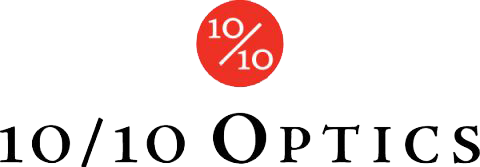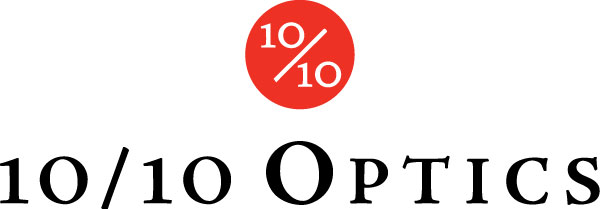What are Blue Light & UV Light?
Ultraviolet (UV) light might instinctively make you think of tanning beds or detective work, but what about UV’s close counterpart on the light spectrum, blue light? Does UV light really do much besides help you get a bronzed glow on vacation? It does!
Ultraviolet light has a couple sub-types; UV-A and UB-B. Both forms of UV light are invisible to humans, but oddly fall within the visible range for some animals. Both birds and bees can see UV light, which helps them detect reflections from plants.
As most of us learned in grade school, light is made up of all the colors in the rainbow and is the reason we can even see those colors to begin with! When we look at the rainbow in “ROYGBIV” (red, orange, yellow, green, blue, indigo, violet) order, they are ordered from longest wavelengths (which have lower energy) that fall on the red side of the spectrum, to shorter wavelengths (which have higher energy) and fall on the blue end. The shorter the wavelength of the light, the higher amount of energy it emits, the harder it is for the human eye to focus on, and the more damaging the ray is to the eye. So, what do these light sources mean to us humans? Where exactly are we exposed to these light sources and are they dangerous? Let’s dive in.
Blue Light
Fast Facts:
- Blue light is visible to the human eye.
- Blue light is often called “HEV” which stands for “High Energy Visible Light”
- HEV has the shortest wavelengths and highest energy of the visible (known) light spectrum.
- Sunlight is our main source of natural blue light.
- Most “screen” devices emit a ton of blue light (TV’s, laptops, smart phones, tablets etc.).
- LED lighting and fluorescent lighting are also common sources of man-made HEV.
Not All Blue Light is Bad
Before diving into some of the more worrisome effects blue light can have on the human eye, it’s important to first recognize that blue light in and of itself is not bad. It’s widely known in the medical community that blue light exposure is vital to maintain good health. Research has shown that HEV helps to regulate circadian rhythm (our natural sleep and wake cycle, or “internal clock”), and helps to increase memory, cognitive function, mood, and alertness. In fact, some people have taken to using “light therapy” to battle seasonal affective disorder, which is a certain type of mood disorder that may cause depression in relation to the seasons changing (and more importantly, the change of sunlight). Light therapy consists of exposing oneself to bright white light, which contains a high amount of HEV blue rays to help boost wakefulness and improve mood.
However, problems arise when exposure to blue light is significant later in the day when our source of natural blue light has set. With the explosion of smartphones, laptops and iPads in modern culture, many of us are getting far too much blue light during the wrong hours of the day, which can contribute to insomnia, fatigue, and erratic sleep cycles.
Damage to the Circadian Rhythm
Blue Light exposure directly correlates to the production of Melatonin in our bodies. It helps us to regulate our sleep cycle. When it begins to get dark outside, our body is triggered to begin production of Melatonin, which will put you to sleep. Research has shown that blue light breaks down Melatonin and can ruin your chances of having quality sleep at night.
Digital Eye Strain
The short waves of HEV light scatter much easier than other waves in the visible spectrum, making it harder for the human eye to focus on them. When you spend a significant part of your time staring at a phone or computer screen, this can result in a lot of “visual noise” that can cause digital eye strain. Lenses that block blue light with < 450 nm (HEV) increase the contrast of the screen significantly. This means using computer glasses (typically with yellow-tinted lenses) will increase eye comfort and decrease eye strain. That’s why computer glasses can be highly beneficial for people whose jobs require extended exposure to a computer screen.
Potential Long Term Damage
HEV (blue light) has short enough waves that it can (and does) penetrate the eye all the way to the back of the retina. As the human eye is not very effective in blocking blue light, virtually all HEV is able to pass through the eye and reach the retina. The retina (or the lining of the back of the inner-eye) contains light-sensitive cells that can be damaged by too much HEV. These changes resemble the damage of macular degeneration, which can cause permanent loss of vision. Although much more research is necessary to disclose just how much HEV is too much for the retina to handle, it is wise to be wary of the exposure of blue light from your laptop or smartphone, and to take your eyes’ long-term health into consideration when it comes to new technologies.
UV Light
Fast Facts:
- “UV” is short for “Ultraviolet”
- Humans can not see ultraviolet light
- Natural sunlight is our main source of UV exposure
Your Eyes Are the Best Defense Against UV
The human eye itself can block almost 100% of UV rays from the sun, without sunglasses or other aids, meaning the light which is most likely to cause damage to us is naturally filtered by our own eyes. This is a great evolutional feat, considering ultraviolet light can cause harm to both the front, and the back of the eye. Exposure to UV rays is linked to lens and retina damage and is also a potential trigger in the development of both Age-Related Macular Degeneration or “AMD”, and cataracts.
Ultraviolet Light is Responsible for Your Summer Glow
UV rays a have higher energy than the rays found in visible light. This higher energy means that UV rays can change skin. This can either result in a healthy glow, a painful burn or long-term damage. Too much UV exposure is linked to the development of skin cancer, which is why tanning booth light bulbs only emit a regulated low amount of UV.
Vitamin D Production
In low doses, UV rays aren’t all bad, they help your body to produce healthy levels of vitamin D! Vitamin D helps keep bones strong and helps with calcium absorption in the rest of the body. Low levels of Vitamin D are also linked to maladies like depression, heart disease and poor immune system.
How You Can Protect Your Eyes
- Avoid exposure to bright screens in the final few hours leading up to bedtime.
- Use “Blue Light Blocking Glasses” or invest in a Blue Light screen filter for your devices. Especially if you work at night or spend a lot of time on your computer during the day.
- Get plenty of natural sunlight during the day to help keep your natural circadian rhythm in check, get a natural mood boost, and help you sleep at night.
- Use “Night Shift” on your phone to shift the backlight to more of an orange light (rather than the default blue it typically emits) or download an app like “Flux” that will automatically dim the blue lighting in your computer as the sun sets.
- Always carry sunglasses with you that block UV light.
- Protect your skin by wearing sunscreen when going outside for extended periods of time.
Ultra-violet and blue light are important part of our daily lives and our overall health. But in large doses they can both have a negative impact on your eyes. So be attentive to limiting your exposure as much as you can and when it’s improbable to avoid use protective glasses to help keep your eyes safe and healthy.

